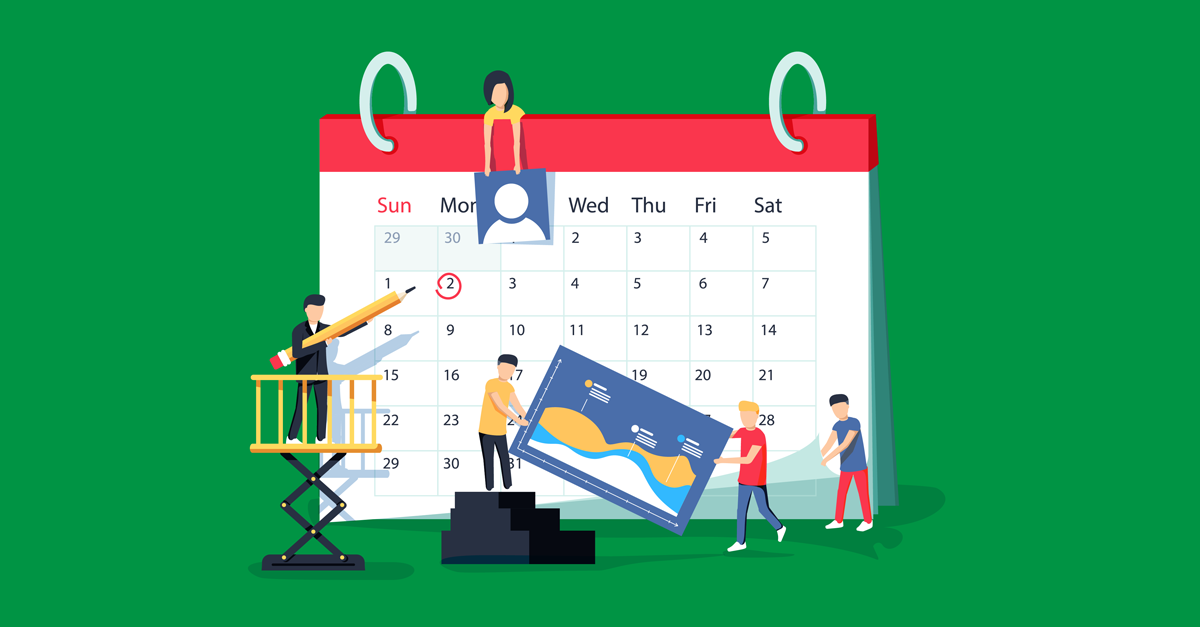Only a few weeks ago, the Oscars took place in L.A. The Oscars, also known as the Academy Awards are arguably the biggest annual event in entertainment. Though there was a slight hiccup this year – oops! – we can use an event like the Oscars to examine just how your next event can secure its place directly in the spotlight.

1. Hashtag Amazing Event
The first thing to keep in mind about marketing your upcoming event is that you should start creating a buzz long before the event takes place. Using our example of the Oscars, the nominees are announced months before the event with much fuss. As people want to be in the know, they keep themselves informed, go see the films when they get nominated, and form an opinion so that they can partake in the inevitable social commentary during the run-up to the event. For your next event, you can create a buzz via social media where you use one consistent hashtag to represent the event. Include this in every piece of marketing you do, so it’s easy for potential attendees to hear about it and see what others have to say.

You may want to create a specific website for the event or insert one into your existing website, depending on the size of the event. You can also blog about it, using juicy pieces of information about the line-up of speakers to entice your audience to visit your site and purchase a ticket.
Use the functionality of Facebook ads to attract your target audience. Don’t forget that you can filter by location, to attract those who are in proximity to the event location, among other factors. You can also use Facebook ads to remarket to those people who may have visited your website but didn’t purchase at that time. Most of our customers like to take time to think about their purchase, particularly when it involves a significant investment, or when availability in their schedules is important. They may not know if they will be free to attend but are still thinking about going. Remarketing targets these prospects on social media to help sway them to purchase.
2. Use Your Previous Experience
Have you run events like this one before? If so, use the media that you accumulated at those events to help illustrate to your potential audience what they can expect at your next event.
Taking media evidence of any event is important. Just think of the sheer number of photographers who attend the red carpet before the Oscars! Good quality photographs and video clips let people sample what you have done in the past, and offers the promise of such quality at your next event. Choose the images and video clips that inform and excite so that they prompt potential attendees to say, I want to be there.
You can share this media on your event website, on your social media event pages, in your blogs and even in your email updates.
3. Utilise Raving Fans
Where would we be without fans? Going back to our example of the Oscars, because of the scale of the event they don’t need to put testimonials on their site. But the fans are a huge part of the marketing of the Oscars nevertheless. Just think of all the personal blogs who write about the event beforehand, the magazines that cover it in the days beforehand, news outlets etc. All of this media interest is garnered because fans want to hear about it.
Though your next event may not be ready for its red-carpet moment just yet if you have held events in the past and sent people away happy, hurray, you have fans! Now you just need to mobilise them. When you are planning and marketing your next event you are wasting a huge opportunity if you don’t let your fans help you out in terms of selling it. When previous attendees recommend an event, that testimonial is seen as reliable, convincing evidence of why a potential attendee should get off the fence and purchase their ticket.

To keep your brand message on point, you can create visuals with your logo, slogan and these testimonials embedded in them to showcase the event as a whole. Use the person’s name, if they give you permission, as this adds credibility. Add these testimonials across your event marketing spectrum.
4. Partner Up
Most large-scale events cost a lot of money to put on, and so corporate sponsorship agreements are often utilised. These partnerships help to off-set the cost for you while also lending the weight of a big-name brand to your event. When your event is a successful one, this works in the favour of the sponsor company too. Sponsors at the Oscars this year included jewellery brand, Swarovski and the watchmaker, Rolex.
When sponsorship agreements are established for a long period of time, the brand can become synonymous with the event, such as with Vhi Women’s Mini Marathon or the Flora London Marathon, which is now sponsored by Virgin but is often still known by its association with the vegetable spread brand. Sponsorship of large event spaces has seen popular stadiums renamed like the old Point Depot, is now the 3 Arena.

Though you may be operating on a smaller scale than some of these big-name brands, there is nothing to say that you can’t use the same principle for your next event. When attendees see that a brand they trust are involved in the event, it fosters a sense of belonging and encourages them to attend.
5. Peek Backstage
Backstage passes have always been the holy grail of events for die-hard fans. The promise that they might get to see or experience something that only the privileged few get to is an incredible draw. The Oscars did this in conjunction with a sponsor this year, they brought a busload of tourists directly into the auditorium during the event for the best view in the house and a meet & greet with a difference.
What can you offer your audience in terms of VIP access? It may be updates through images on social media about the event venue, speakers, or sponsors. If there is catering at your event, you might like to include menu teasers. Any sort of information that makes your fans feel like they are ‘in the know’ can be a great marketing tool.
6. Keep it Going
When the day of the event comes along, do not stop. Your event is not complete until every piece of hired cabling or glassware is returned to the suppliers and your marketing has been well and truly ‘wrapped’.
As in the last tip, use the day of the event to create hype with sneak peek updates before the event gets underway. When you are up and running, hand it over to your attendees, let them know what the hashtag for the event is, though they should already be familiar with it! Get everyone tweeting throughout the event by encouraging photo opportunities. You can include a sponsored backdrop for this purpose.
If you pay close attention to social media on the day, you can get your event trending on social media, which is great exposure. It makes attendees feel that they are part of something that matters, and creates a sense of FOMO for those who aren’t there, but will make sure they are next time!
In the days after the event, take another leaf out of the Oscars book and create great content showcasing the highlights of your event. This can be nice to look back on for those that were in attendance and piques the interest of those who weren’t, again, useful for next time. In these wrap-up pieces, you could include a few words from some of your speakers about the day, high-quality images showing the value that was to be had, and video which conveys the excitement that was in evidence on the day.
These wrap-up pieces are also a great time to mention your next event if you have one in the pipeline. We have come full-circle now to tip number 1, begin marketing your next event long before It happens.
As we have seen, through the use of our example of the Oscars, events, just by virtue of being an event provide tons of marketing opportunities. To ensure that your next event hits the spotlight for all the right reasons, identify what it is that makes your event special and then be consistent in getting your message out there over the course of your event’s lifecycle.


